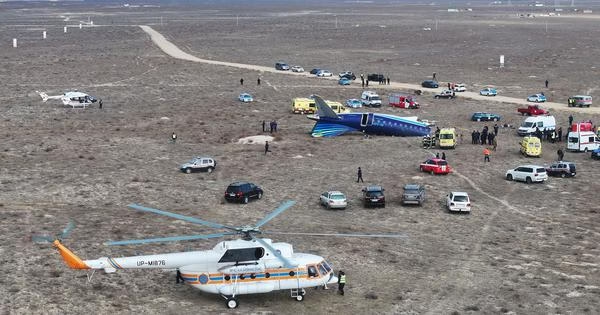The aviation industry has experienced several significant accidents, resulting in numerous fatalities. Despite these tragedies, flying remains one of the safest modes of transportation, with continuous efforts to enhance safety protocols and prevent future incidents.
Major Plane Crashes and Fatalities (2020-2025):
- Ukraine International Airlines Flight 752 (January 8, 2020): The aircraft was shot down shortly after takeoff from Tehran, Iran, by the Islamic Revolutionary Guard Corps, resulting in the deaths of all 176 people on board.
- Pakistan International Airlines Flight 8303 (May 22, 2020): The plane crashed into a neighborhood in Karachi during landing, killing 97 of the 99 occupants and one person on the ground.
- Sriwijaya Air Flight 182 (January 9, 2021): This flight crashed into the Java Sea shortly after departing Jakarta, Indonesia, leading to the loss of all 62 individuals aboard.
- China Eastern Airlines Flight 5735 (March 21, 2022): The aircraft descended rapidly and crashed near Wuzhou, China, killing all 132 passengers and crew members.
- Yeti Airlines Flight 691 (January 15, 2023): The plane crashed into a gorge while attempting to land in Pokhara, Nepal, resulting in 72 fatalities.
- Voepass Linhas Aéreas Flight 2283 (August 9, 2024): The aircraft crashed in a residential area near Vinhedo, São Paulo, Brazil, killing all 62 people on board.
- Azerbaijan Airlines Flight 8243 (December 25, 2024): The plane crashed during an emergency landing near Aqtau International Airport, Kazakhstan, resulting in 38 deaths out of 67 occupants.
- Jeju Air Flight 2216 (December 29, 2024): The aircraft crashed into a fence while landing at Muan International Airport, South Korea, leading to 179 fatalities among the 181 people on board.
- American Eagle Flight 5342 (January 29, 2025): A mid-air collision occurred between this flight and a U.S. Army Black Hawk helicopter near Washington, D.C., resulting in the deaths of all 67 individuals on both aircraft.
Steps Taken to Prevent Plane Crashes:
The aviation industry continually implements measures to enhance safety and reduce the risk of accidents:
- Advanced Technology: Modern aircraft are equipped with sophisticated avionics, including Traffic Collision Avoidance Systems (TCAS) and Ground Proximity Warning Systems (GPWS), which alert pilots to potential hazards.
- Stringent Maintenance Protocols: Regular and thorough maintenance checks are mandated to ensure aircraft are in optimal condition, addressing issues such as ice buildup and mechanical failures.
- Pilot Training: Pilots undergo rigorous training programs, including simulations of emergency scenarios, to prepare them for various in-flight situations.
- Air Traffic Control (ATC) Enhancements: Improved communication and coordination between pilots and ATC personnel help prevent miscommunication-related incidents.
- Fatigue Management: Regulations have been established to limit pilot working hours, reducing the risk of errors due to fatigue.
Additional Measures to Enhance Aviation Safety:
While significant progress has been made, further steps can be taken to bolster aviation safety:
- Infrastructure Improvements: Upgrading airport facilities, such as lengthening runways and enhancing approach lighting, can reduce landing and takeoff risks.
- Enhanced Airspace Management: Implementing more precise routing and altitude assignments can minimize the risk of mid-air collisions.
- Advanced Weather Monitoring: Investing in better weather prediction tools can help pilots avoid hazardous conditions.
- Continuous Training: Regularly updating pilot and crew training programs to include the latest safety protocols and technologies ensures preparedness for emerging challenges.
- Global Standardization: Harmonizing safety regulations across countries can ensure consistent safety practices worldwide.
In conclusion, while aviation accidents have occurred over the past five years, the industry remains committed to implementing and enhancing safety measures to protect passengers and crew members.
Assessing the safety of an airline involves examining various factors, including accident history, fleet age, safety audits, and industry rankings. Below is an overview of the safety records and standings of several major airlines:
American Airlines has maintained a strong safety record over the years. However, on January 29, 2025, an American Airlines jet (Flight 5342) collided with a U.S. Army Black Hawk helicopter near Washington, D.C., resulting in 67 fatalities. This tragic incident ended a long period without fatal crashes for U.S. carriers.
Despite this, American Airlines was ranked 13th among the world’s safest airlines in 2025 by AirlineRatings.com, an improvement from 22nd place in 2024.
United Airlines has a commendable safety record and was ranked 23rd among the world’s safest airlines in 2025 by AirlineRatings.com.
The airline has not experienced any recent fatal accidents and continues to uphold rigorous safety protocols.
Delta Air Lines is recognized for its strong operational track record and commitment to safety. In 2023, Delta flights arrived on time 84.72% of the time, surpassing the North American industry average of 74.45%. The airline completed 98.82% of its scheduled flights that year.
Delta was ranked 21st among the world’s safest airlines in 2025 by AirlineRatings.com.
Lufthansa, Germany’s flagship carrier, is known for its stringent safety standards and has not been involved in any recent fatal incidents. While specific rankings for 2025 are not available in the provided sources, Lufthansa consistently maintains a strong reputation for safety in the aviation industry.
Turkish Airlines
Turkish Airlines has made significant strides in enhancing its safety protocols over the years. Although it has faced incidents in the past, the airline has implemented comprehensive safety measures and training programs to improve its safety record. Current specific safety rankings for Turkish Airlines are not available in the provided sources.
KLM Royal Dutch Airlines
KLM has a long-standing reputation for safety and reliability. However, in 2025, it was notably absent from AirlineRatings.com’s top 25 safest airlines list due to recent incidents in the previous year. Despite this, the airline retains a seven-star safety rating and is considered “exceptionally safe.”
In conclusion, while these airlines have experienced varying incidents and rankings, they all adhere to strict international safety standards and continuously work towards enhancing passenger safety.



